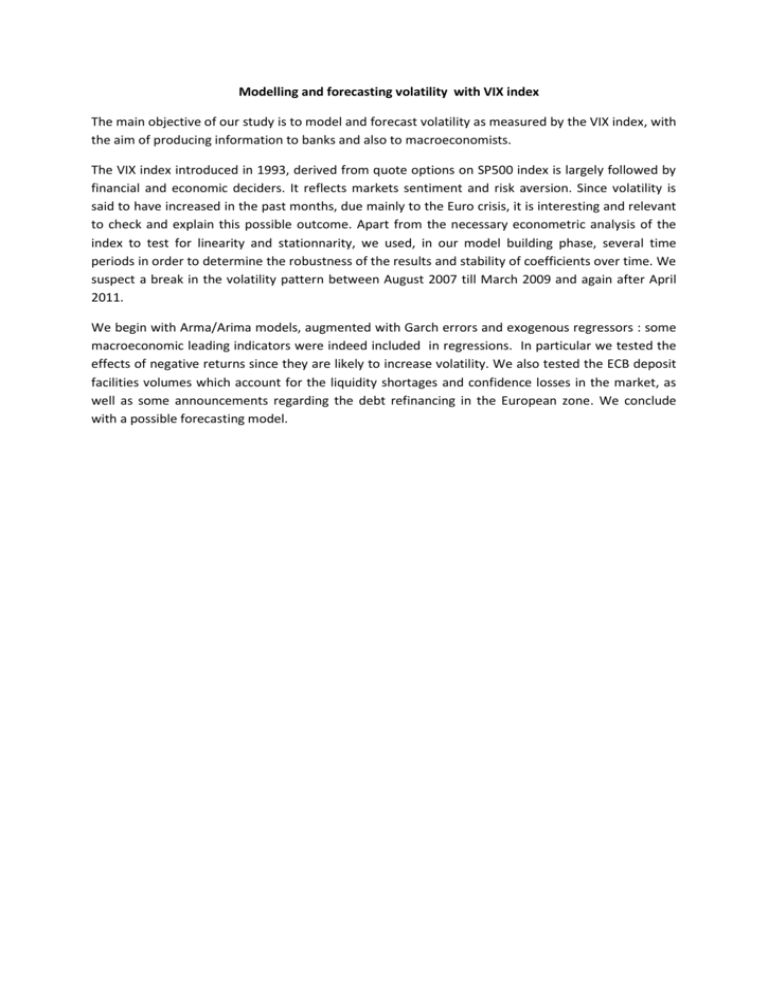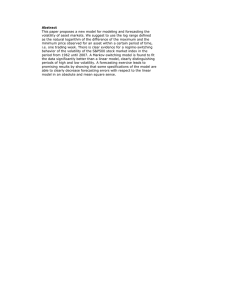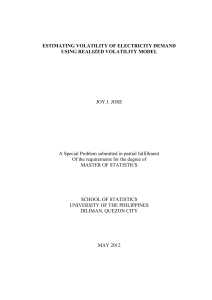Modelling and Forecasting Volatility with VIX index
advertisement

Modelling and forecasting volatility with VIX index The main objective of our study is to model and forecast volatility as measured by the VIX index, with the aim of producing information to banks and also to macroeconomists. The VIX index introduced in 1993, derived from quote options on SP500 index is largely followed by financial and economic deciders. It reflects markets sentiment and risk aversion. Since volatility is said to have increased in the past months, due mainly to the Euro crisis, it is interesting and relevant to check and explain this possible outcome. Apart from the necessary econometric analysis of the index to test for linearity and stationnarity, we used, in our model building phase, several time periods in order to determine the robustness of the results and stability of coefficients over time. We suspect a break in the volatility pattern between August 2007 till March 2009 and again after April 2011. We begin with Arma/Arima models, augmented with Garch errors and exogenous regressors : some macroeconomic leading indicators were indeed included in regressions. In particular we tested the effects of negative returns since they are likely to increase volatility. We also tested the ECB deposit facilities volumes which account for the liquidity shortages and confidence losses in the market, as well as some announcements regarding the debt refinancing in the European zone. We conclude with a possible forecasting model.





![[These nine clues] are noteworthy not so much because they foretell](http://s3.studylib.net/store/data/007474937_1-e53aa8c533cc905a5dc2eeb5aef2d7bb-300x300.png)





